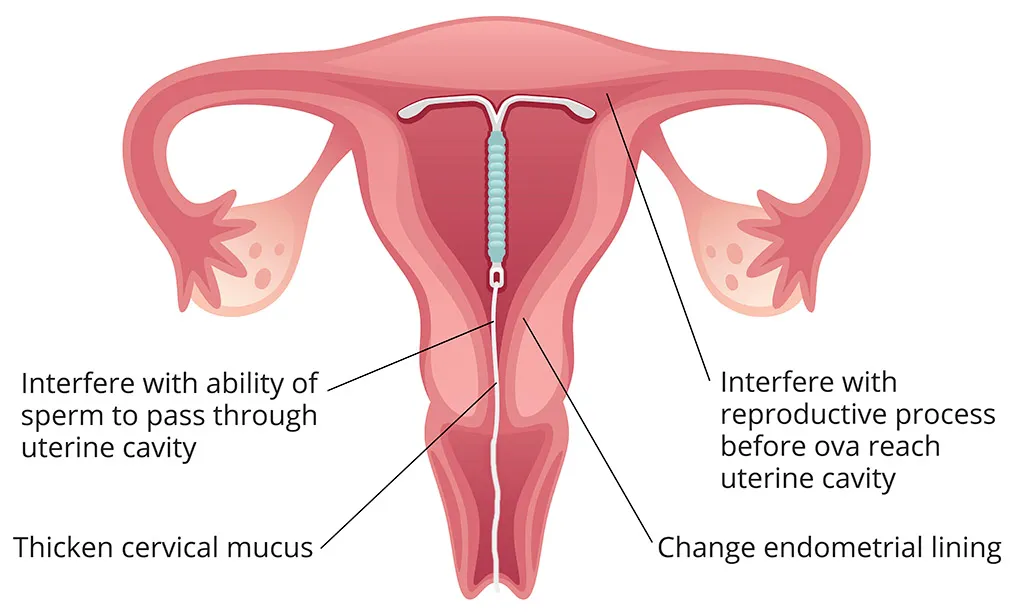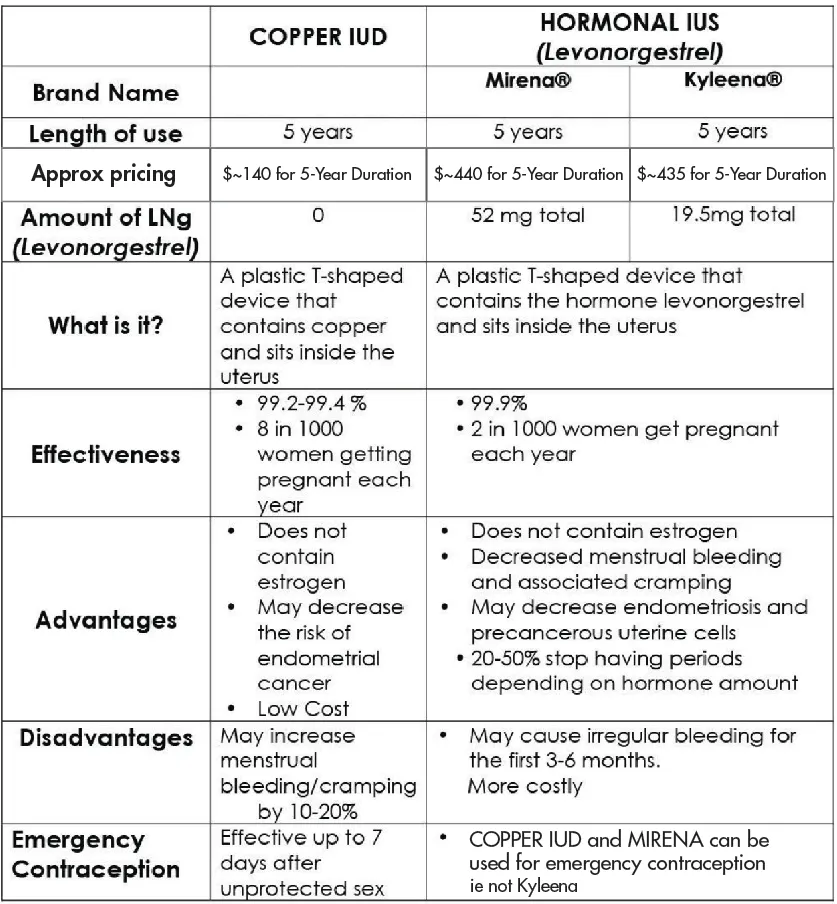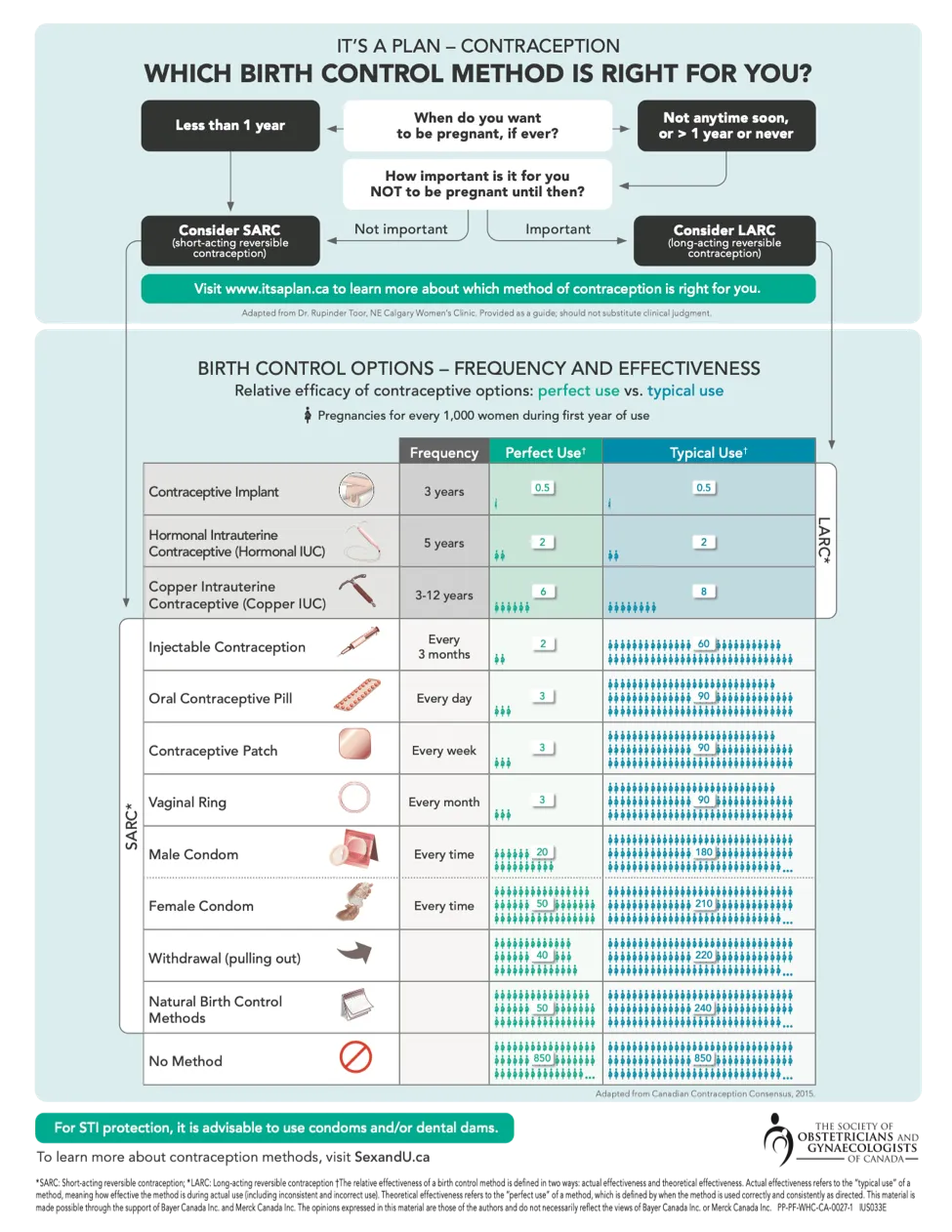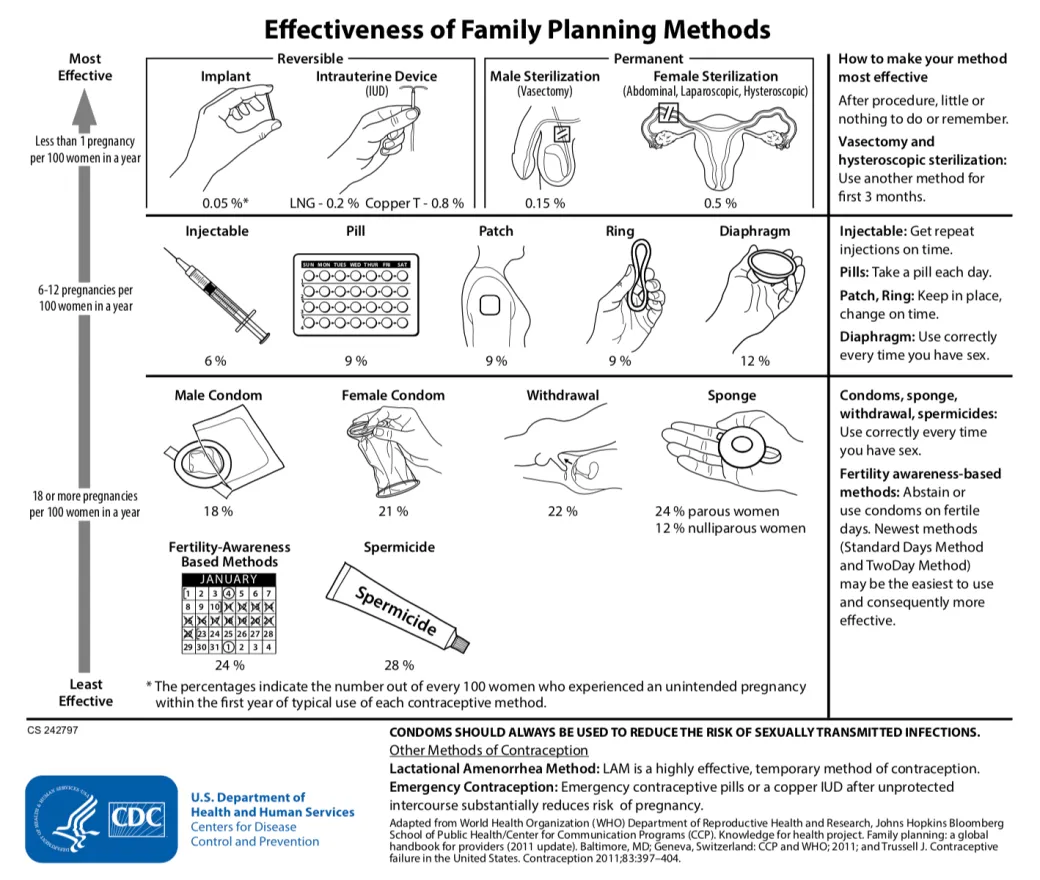Leading edge contemporary birth control
What is Nexplanon®?
Nexplanon ® is a birth control implant that is placed under the skin on the inside of your non-dominant upper arm during a simple office procedure by a trained professional. The subdermal implant is a small, soft, flexible rod that’s about the size of a matchstick. It's great for women who can not tolerate an IUD, can not use an IUD
viz. repeated expulsion, abnormality of the uterine cavity viz. bicornuate uterus or anyone who prefers not to to have a pelvic examination or is afraid of getting an IUD.
It is a long active reversible contraceptive which means that it can provide birth control for up to 3 years.
Reversible means that if you want to stop using the Nexplanon birth control implant, it can be removed at any time and you may be able to get pregnant as early as 1-3 weeks after the implant is removed.
How Does Nexplanon® work?
Nexplanon contains a hormone called etonogestrel which is a type of progesterone. It does not contain estrogen. This IUD implant continuously releases a small amount of etonogestrel into your blood.
It works in two ways to prevent pregnancy:
- It stops the release of an egg from your ovaries (ovulation).
- It causes changes in your cervical mucus, making it hard for sperm to enter your uterus.
Will my Menstrual Bleeding Pattern Change on Nexplanon®?
Your period may change after Nexplanon® insertion.
For 30 % of Nexplanon users the period stops altogether or becomes infrequent. However, for 40-50% owomen the period can become prolonged and/or more frequent which is not dangerous or unhealthy but may be annoying .
If your bleeding pattern changes, it does not mean that Nexplanon® does not suite you or is not working. Generally speaking, the bleeding pattern that you have at the end of 3 months may give you an idea of your future bleeding pattern. Everyone is different.
What are The Possible Risks with Nexplanon®
- You may experience bruising, pain, numbness, bleeding, infection or scarring at the site after Nexplanon® insertion/removal
- Migrated implant: It is extremely rare that Nexplanon® implant could move from the original insertion site in your arm to a blood vessel or in the lung. This might happen if it is not inserted correctly or it is dislodged as a result of extreme force, like during contact sports. If the implant moves you may need a bigger incision or surgery to remove it. If your implant cannot be found in the arm, your doctor may use x-ray or other imaging methods to find it.
- Broken or bent IUD implant: The implant could break or bend while in your arm. This should not affect how the implant works.
What are Possible Side Effects Of Nexplanon®?
Besides changes in your menstrual bleeding patterns, other side effects may occur while on Nexplanon ®. It is helpful to know what may possibly happen and what to look out for . Side effects can include hormonal side effects ( mood swings, depression, anxiety, weight gain, acne or headache ). Hormonal side effects are usually mild and temporary disappearing after a few cycles - this is because after it is inserted, there is a surge of the hormone in the bloodstream which returns to baseline after a few cycles when these symptoms resolve. However. for a few patients they might persist in which case you should be speak to your primary health care provider.
Remember everyone is different. Be sure to tell your doctor about any side effects that you are concerned about.
When Should Nexplanon ® be Inserted?
The timing of insertion is important and will depend on:
- Your menstrual cycle
- Whether you are using other types of birth control
- If you have recently had a baby, miscarriage or abortion
How is Nexplanon ® Inserted?
Nexplanon® can be inserted and removed in the clinic by Dr. Michelle Gerber who has completed the necessary training to perform the procedure - this takes about 5 to 10 minutes.
The Nexplanon® implant is inserted on the inner, upper side of your non-dominant arm, which is the arm you do not write with. The exact position is first marked on your skin using a surgical marking pen. The area is then cleaned, and a small injection of local anesthetic is given to numb the skin. Once the area is frozen, the Nexplanon® applicator is used to gently puncture the skin with a fine needle. The implant is placed just under the skin by sliding the needle through the marked area, leaving the small plastic device in place. While the implant cannot be seen, you will be able to feel it under the skin after the procedure.
Immediately after the nexplanon insertion, you'll be shown how to feel for the implant in your arm. You should be able to feel both ends between your thumb and finger.
This area is then covered by 2 bandages.
- A small waterproof bandage over the insertion site must be left on for 5 days and the arm should be kept out of water (consider only bathing or wrapping the arm in plastic wrap or a small towel).
- A pressure bandage which is applied to help minimize bruising is left on for 24 hours post insertion.
What Happens Next?
Once the bandages are removed, it is normal for the insertion site to look bruised and feel tender . This should improve as the area heals, but keep an eye on it and contact us or your local health care provider if you have any concerns.From time to time, gently feel for your Nexplanon® implant under the skin. If at any point you cannot feel it, use condoms and see a health care provider as soon as possible.It is also important to remember that Nexplanon® does not protect against sexually transmitted infections (STIs), including HIV/AIDS.
Medications That Can Interfere with Nexplanon®
Certain medications, vitamins, and herbal supplements — as well as grapefruit — may reduce the effectiveness of Nexplanon®. These include some drugs used to treat epilepsy, tuberculosis, HIV, Hepatitis C, and other infectious diseases, as well as medications taken after organ transplants, certain anti-emetics used during chemotherapy, and the herbal supplement (St. John’s Wort) , which is often used for low mood or depression.If you are prescribed any of these medications while using Nexplanon®, it is recommended to use a backup method of birth control (such as condoms) during treatment and for 28 days after the last dose.
Frequently Asked Questions
- There are two styles of IUDs available in Canada:
Hormonal progesterone-based IUDs (Mirena and Kyleena) continuously release low levels of levonorgestrel, which is a progestin much like the hormone progesterone produced by the ovaries. Levonorgestrel thickens cervical mucous, so sperm and ovum do not meet. It also thins the lining of the uterus, making it an excellent choice for women with heavy periods.

- Non-hormonal /copper-based IUDs release copper into the uterus and prevent pregnancy by stopping sperm from fertilizing an egg and reducing sperm movement.

- IUDs are Estrogen free. This reduces your risk of a blood clot
(Smokers should avoid estrogen containing contraception). - IUDs have less hormonal side-effects than the pill, patch or ring which contain both estrogen and progesterone.
- IUDs are safe for breastfeeding.
- IUDs do not cause hormone-related facial pigmentation like chloasma or melasma.
- An IUD provides long-term contraceptive protective for five to 10 years, which makes it the cheapest form of birth control available.
- You cannot forget it, skip it or mess it up. As long as it is in position in the uterus it works.
- It is also convenient, as you do not have to remember to take pills or apply patches or rings regularly.
- Because the IUD cannot be seen or felt, it is private. It is your choice to share information about the IUD.
- In 60% of women using Mirena, menstrual flow becomes lighter or can stop altogether. It is an excellent treatment for women with heavy and or painful periods.
- IUDS are very reliable birth control for women who are not allowed to get pregnant due to medical reasons including women taking Accutane for acne.
- When you are ready to become pregnant, your healthcare provider can easily remove the IUD by pulling on the strings with no long-term effects on your fertility or future pregnancies . IUDs do not stop ovualtion, so return to fertility is immediate.
- IUDs can be used for Emergency contraception ( if placed within 7 days after unprotected sex eg. broken condom.


- The above chart shows the number of pregnancies for each method. Perfect use is derived from clinical trials and does not represent real-life outcomes. Typical use failure rates are real to life.
- No.
Hormonal IUDs can be used to improve quality of life by reducing menstrual flow in women with heavy bleeding and to improve painful periods. - Hormonal IUDs improve Iron deficiency anemia in women with heavy periods.
- Hormonal IUDs can be used to manage pain and bleeding in patients with endometriosis.
- Many athletes who do not want their periods get hormonal IUDs.
- IUDs are very reliable for women who have medical reasons that don’t allow pregnancy, such as women taking Accutane for the treatment of acne.
- Copper IUDs are great for women who can not tolerate hormonal birth control as they are hormone free.
- Certain Copper IUDs and Mirena IUD can be used for emergency contraception if placed within 7 days of unprotected sex.
- No. With hormonal IUDs, the lining of the uterus generally does not thicken, so does not need to be shed (that is your period).
- In fact, the progestin released from hormonal IUDs inside the uterus, protect against abnormal cell changes in thelining that could lead to uterine cancer.
- In 60% of women using Mirena, menstrual flow might become lighter or stop altogether. By the 6th month, 1 in 5 women with MIRENA no longer menstruate, making it an excellent option for women with heavy periods.
- Many. You don’t have to remember to take it, and it is a discrete, private choice.
- IUDs are a good choice for women who have an increased tendency to blood clotting, including deep vein clots, or pulmonary embolism eg. women who smoke nicotine.
- They work for 3-5-10 years (depending on the style) which makes them the most cost-effective method of birth-control.
- IUDs are also easy to remove should you wish to become pregnant, with no long-term effects on your fertility or future pregnancies.
- Hormonal IUDs can benefit women with endometriosis (redue pain and bleeding) and irregular periods (polycystic ovarian disease).
- IUDs have been shown to reduce the risk of uterine and cervical cancer.
- IUDs do not protect against sexually transmitted infections. Always use condoms for STI protection.
- Hormonal IUDs may cause irregular bleeding and spotting, which can take several months to settle because the uterus can take time to adjust to the hormones. This is not serious and requires patience.
- About 10% of women with hormonal IUDs have them removed for hormonal side effects like acne, weight gain or mood changes.
- Copper IUDs may cause heavier, longer and/or more painful periods, but this typically improves within a few months. Women with heavy and or painful periods should avoid Copper IUDs, as it could worsen your symptoms.
- Women with low iron should also avoid copper IUDs.
- Rarely (< 1% ) the IUD can :
injure (perforate) your uterus wall—this is not serious and heals on its own. It will not cause any problems later with fertility. - fall out (expulsion) - this is more commeon if an IUD is placed in the post partum period (after a baby).
- moves outside the uterus (migration) - in this event minor surgery is required to remove the IUD
- When your doctor inserts the IUD inside the uterus, the strings, made of plastic threads, are cut about 2 cm from the cervix.
- To check them, first, wash your hands. Then, while sitting or squatting, insert your index or middle finger into your vagina until you touch the cervix, which will feel firm and rubbery. Feel for the IUD string ends coming through your cervix. If you feel the strings, it is in place and should be working.
- If the strings feel longer or shorter than the last time you checked them, or if you feel the hard part of the IUD against your cervix, your IUD may have moved. In this instance, you should use condoms and see a doctor. Do not try to push the IUD back yourself. Also, never pull on the IUD strings.
- If you're worried your IUD has moved, use backup birth control until you can see your doctor. Perform a home pregnancy test to exclude pregnancy. If your doctor cannot locate the strings during a pelvic exam, she may order imaging tests like a pelvic ultrasound to confirm the location of the IUD.
- It is rare for your IUD "to move out of place" if properly placed by a skilled inserter. If this does happen it usually occurs in the first few months. Symptoms that could indicate your IUD is malpositioned include abnormal bleeding or pelvic pain .
- Usually, they have tucked themselves into the cervical canal or uterus. The strings can be easily swept back into view by your doctor during a pelvic exam using a device called a cervical cytology brush. Sometimes, a pelvic ultrasound is useful to confirm your IUD is in the womb.
- Missing strings might be a sign that the entire device has " fallen out " from the uterus. This is very rare but reinforces the need to check your strings regularly.
- Sometimes a partner can feel the strings, so you may wish for them to be cut shorter. Once cut, it can be challenging to check for strings and you will need to be seen by a skilled health-care provider when your IUD is due for removal or you desire pregnancy.
- No. Your IUD will continue to work just as effectively, regardless of how many sexual partners you have.
- This happens rarely. If it does, have the IUD removed as soon as possible.
- If you choose to change contraceptive methods, wish to plan a pregnancy sooner or discontinue use, an IUD can be easily removed by a healthcare professional. It is usually a simple process done by inserting a speculum and using the threads to slide the IUD out from the uterus through the cervix. Some experience brief cramping during removal.

- Both methods are excellent forms of birth control.
Nexplanon ® is 99.95% and lasts for 3 years.
Hormonal IUDs are 99.8% and lasts for 5-7 years depending on the age it was inserted.
Copper IUDs are 99.2% effective and last 3, 5 or 10 years depending on the type. - IUDs are placed inside the uterus and impact the uterine lining while the subdermal implant (Nexplanon ®) is placed under the skin of the upper arm and works by inhibiting ovulation (release of an egg from the ovary).
- You will be able to predict your menstrual bleeding pattern with IUDs i.e. with a non-hormonal Copper IUD you will have a regular cycle whereas with a hormonal IUD you are more likely to have light spotting or no bleeding at all.
- With Nexplanon ® for most women, your period will stop or you might have infrequent bleeding . However, for a small percentage of implant users, periods could become unpredictable , longer, and/or more frequent.
- IUDs are placed inside the uterus and are very discrete.
- Nexplanon ® is placed under the skin of the upper arm. It is very discrete, yet it is still easy for you to feel under the skin of your arm with your fingertips. It feels like a small flexible rod about the length of a matchstick.
- Some women gravitate towards one form based on the type of procedure used to place the device, and other women might lean towards intrauterine (inside the uterus) versus subdermal (under the skin).
- Cost might be a factor.
- Generally Copper IUDs are the least expensive ( ~ $140), Hormonal IUDs cost ( ~ $430) and Nexplanon ® costs ( ~ $360).
- If you need further information, the experts at the IUD clinic in Langley would be happy to guide you.

- The Canadian Pediatric Society states that “long-acting, reversible methods of contraception should be the first-line birth control option for youth.” These methods have the lowest failure rate and are first-tier options.
- If you're not sure which IUD to choose or whether you should consider Nexplanon® Subdermal Implant, you are not alone.
- We are here to help provide you with the information you need to guide you , as well as assist you in gaining confidence in your contraceptive decisions.
- IUDs and Nexplanon® Contraceptive Implant, simply put, are the most effective non-permanent methods of birth control.
- Getting pregnant unexpectedly or at the wrong time in a woman's life can be very traumatic. Taking the big step towards effective contraception can allow you to focus on your personal and occupational goals, without any major surprises.
- The following position statements have been made by Canadian and International Societies regarding the use of IUDs and Nexplanon® Subdermal Implants:
- The Society of Obstetricians and Gynecologists of Canada (SOGC) and the American College of Obstetrics and Gynecology (ACOG), recommend Long-Acting reversible contraception as the first-line contraceptive choice for preventing pregnancy for all sexually active women.
- The Canadian Pediatric Society states that long-acting reversilbe methods of contraception ( IUDs or implant) should be the first-line birth control for youth as these methods have the lowest failure rate and are first-tier options.
- The World Health Organisation (WHO) recognizes reproductive and sexual health care as a fundamental human right.
